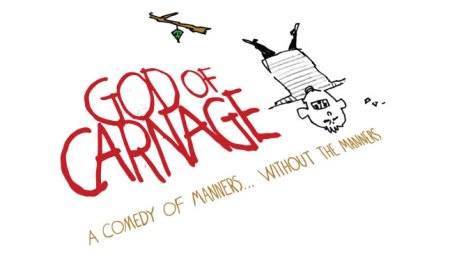Lena Dunham, a 23—year–old filmmaker from New York who has a degree in film studies from Oberlin, plays Aura, a 22–year–old Oberlin grad with a “useless” film studies degree, in Lena Dunham’s first feature as a director, “Tiny Furniture,” written by: Lena Dunham.
“Tiny Furniture” is the story of Aura and her attempt, immediately post–college, to figure out what she is going to do with herself. Aura returns home to New York City after graduation. She moves back into her mom’s apartment. At a party, she re–connects with a childhood friend and meets an aspiring young filmmaker who, like Aura, is a modestly successful YouTube–star. As she unsuccessfully tries to go out with the filmmaker, she gets a job as a day hostess at a restaurant where she meets a “hot” cook. While trying to go out with either of these guys, Aura is also trying to figure out her new place within her family. Her mother, a successful fine-art photographer, and sister, a brilliant high school junior, find the balance of their lives thrown off by the return of Aura.
The subgenre of movies concerned with post–college malaise (Kicking and Screaming, St. Elmo’s Fire) has a tendency toward self–pity that can only be allayed by self-parody. A new movie in that genre by and about an upper–class young woman from TriBeCa who just graduated from college would seem, at first glance, to be destined to wallow in disgusting amounts of self-pity (and not –parody).
“Tiny Furniture” doesn’t. The movie is remarkably witty and wordy. Dunham, who wrote the script, is very funny, able to find humor anywhere; for example, the best running joke in the film has to do with the white cabinets in Aura’s mom’s apartment. At first, the word–heavy humor and upper–class setting of the movie reminded me of the screwball comedies of the 30s and 40s. Screwball comedies were a result of the Great Depression; they offered to the movie–going masses a glimpse into the silly, absurd lives of the very, very rich. Their characters were often witty and wealthy but unable to function outside of their limited world. “Tiny Furniture,” made in the aftermath of the economic crisis, about an upper–class young woman whose mother is a celebrity in the art world, is a lot like the screwball comedy in the inaccessibility of the world it portrays to most Americans and its style of humor.
However, there are important differences between “Tiny Furniture” and a screwball comedy like “The Philadelphia Story.” Screwball comedies were made by studios whose audiences would inevitably consist of all manners of movie-going Americans. They had all–star casts and nation–wide distribution. These films showed remarkable class–consciousness, even by today’s standards. The finest screwball comedies were also great social commentaries that would be seen by a huge audience in an economic depression.
“Tiny Furniture,” on the other hand, is destined for a small, niche audience. Its similarities to screwball don’t survive examination. Although it’s style of humor and the economic situation surrounding its production recall screwball comedies, “Tiny Furniture” has neither the social consciousness nor general upbeat feeling of a screwball comedy. On the contrary, one of its strengths is the amount of pain and anxiety it conveys behind all the humor.
The movie won the narrative film prize at the SXSW festival last year, which enabled it to get modest distribution, but it will not be shown in mega–cinemas across the country. After seeing it, I get the feeling that “Tiny Furniture” is the type of movie whose audience will know in advance whether or not they would like it. It takes place in the New York art world, an exotic place by most people’s standards. Yet, because it is her home, Ms. Dunham treats that world with a familiarity that would alienate most. The movie is about a young woman who just graduated from a liberal arts college and doesn’t know what to do with herself; once again, I don’t see that this would appeal (or even attempts to appeal) to a wide audience.
However, limited appeal doesn’t make it a bad movie. There are a lot of things I liked about “Tiny Furniture.” I liked how Aura, the main character, is not a typical Hollywood-beauty; rather, she looks like a real person and is much easier to believe. I liked how Aura was totally confused about what to do with her life. Even though I’m only a freshman (and have comparatively low general–life–anxiety, I imagine), I can easily relate to Aura’s confusion and uncertainty about entering the “real world.” I liked how the ending of the movie was boldly unsatisfactory; Aura is an asshole.
In the end, though, “Tiny Furniture” is not a “great film.” It’s the kind of movie that could work just as well as a play or a TV show; the story is not told in a cinematically interesting way. It would be really arrogant and pretentious to call it a bad movie for this “flaw,” though. It’s a really good movie, and I liked it.







